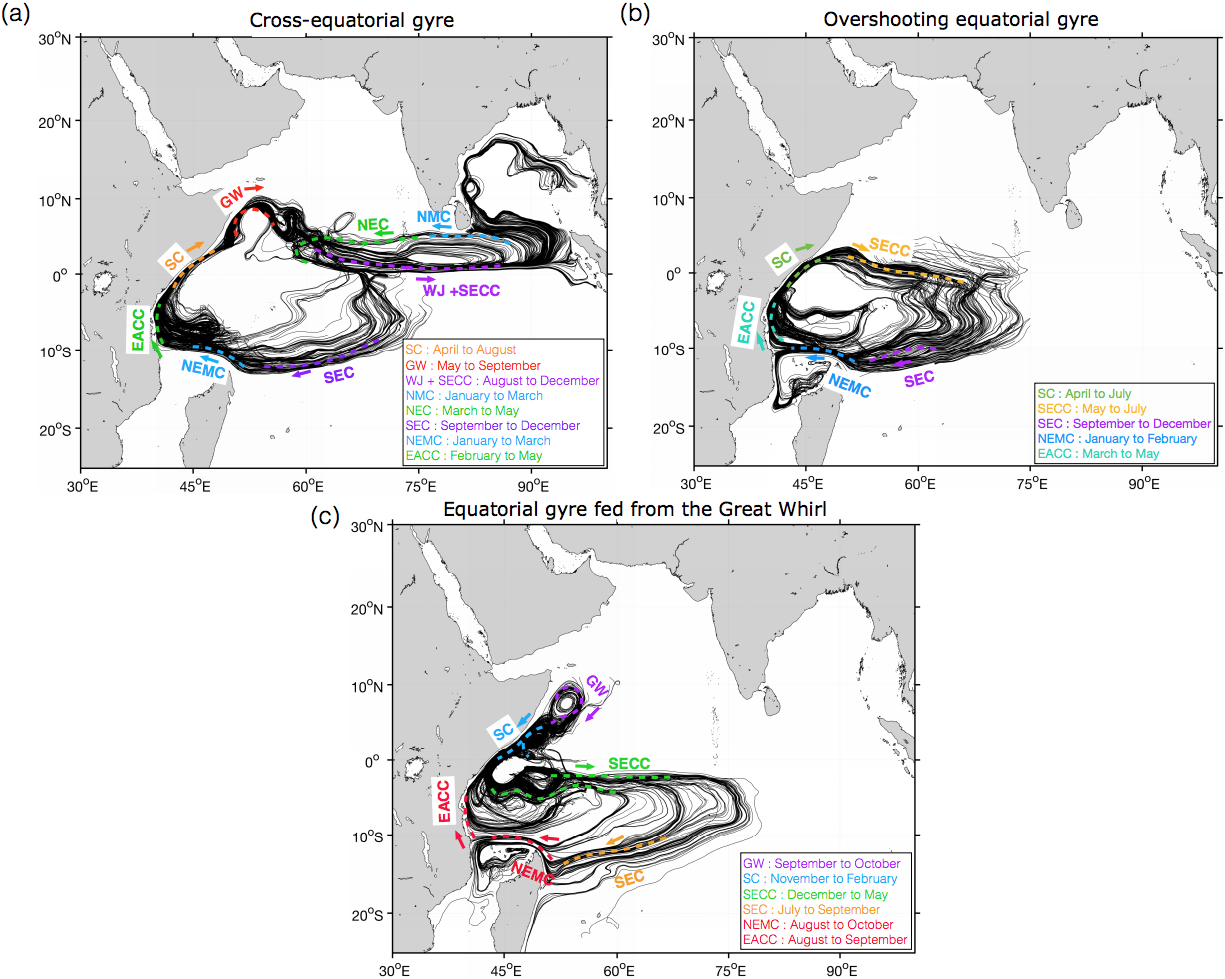The northern Indian Ocean basin-wide circulation, forced by strong Asian monsoon winds, seasonally reverses, from cyclonic in boreal winter to anticyclonic in summer. As such, there is no steady circulation in the region and this has profound impacts on western boundary dynamics and cross-equatorial flow, on the connectivity of currents and dispersion of properties. The extraordinary temporal variability of the Arabian Sea circulation makes it one of the most challenging regions to study. A time-mean climatology is not representative of the circulation at any time of the year and Eulerian seasonal averages lead to the appearance of connectivity between current systems which do not exist in reality (Beal et al., 2013).
Here we propose to exploit observations from drifters and models to study the rectified circulation of the northern Indian Ocean. Lagrangian pathways reveal the circulation of water parcels that results from the seasonally-fluctuating flows. Connectivity between the western boundary, the interior of the Arabian Sea, and with surrounding basins is mapped and transports quantified. We are also investigating the mechanisms governing these exchanges : geostrophic balance, Ekman forcing and mesoscale variability. Vertical migration of water parcels will also be studied.

Simplified representation of the climatological surface equatorial gyres. Color represent the sustained current periods. Panel a: cross-equatorial gyre passing through the coastal Somali Current from April to August. Panel b : equatorial gyre with an overshooting of the Somali Current across the equator, from April to May. Panel c: southward trajectories crossing the Somali Current southward from November to February.




